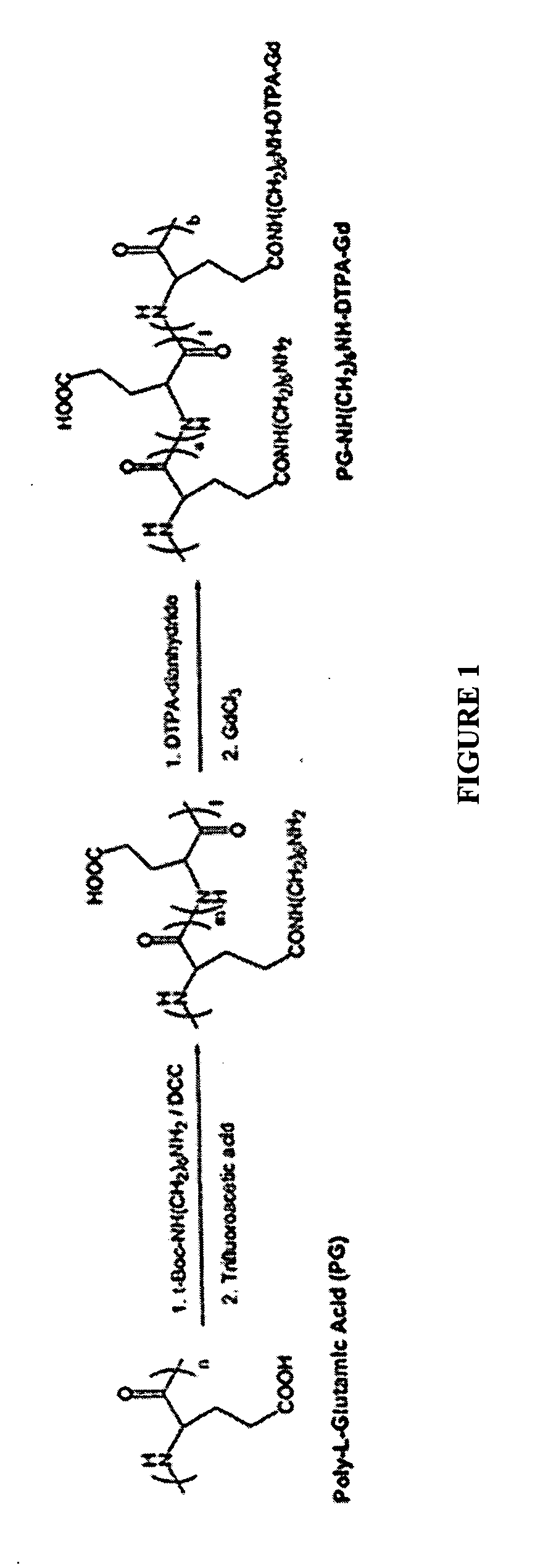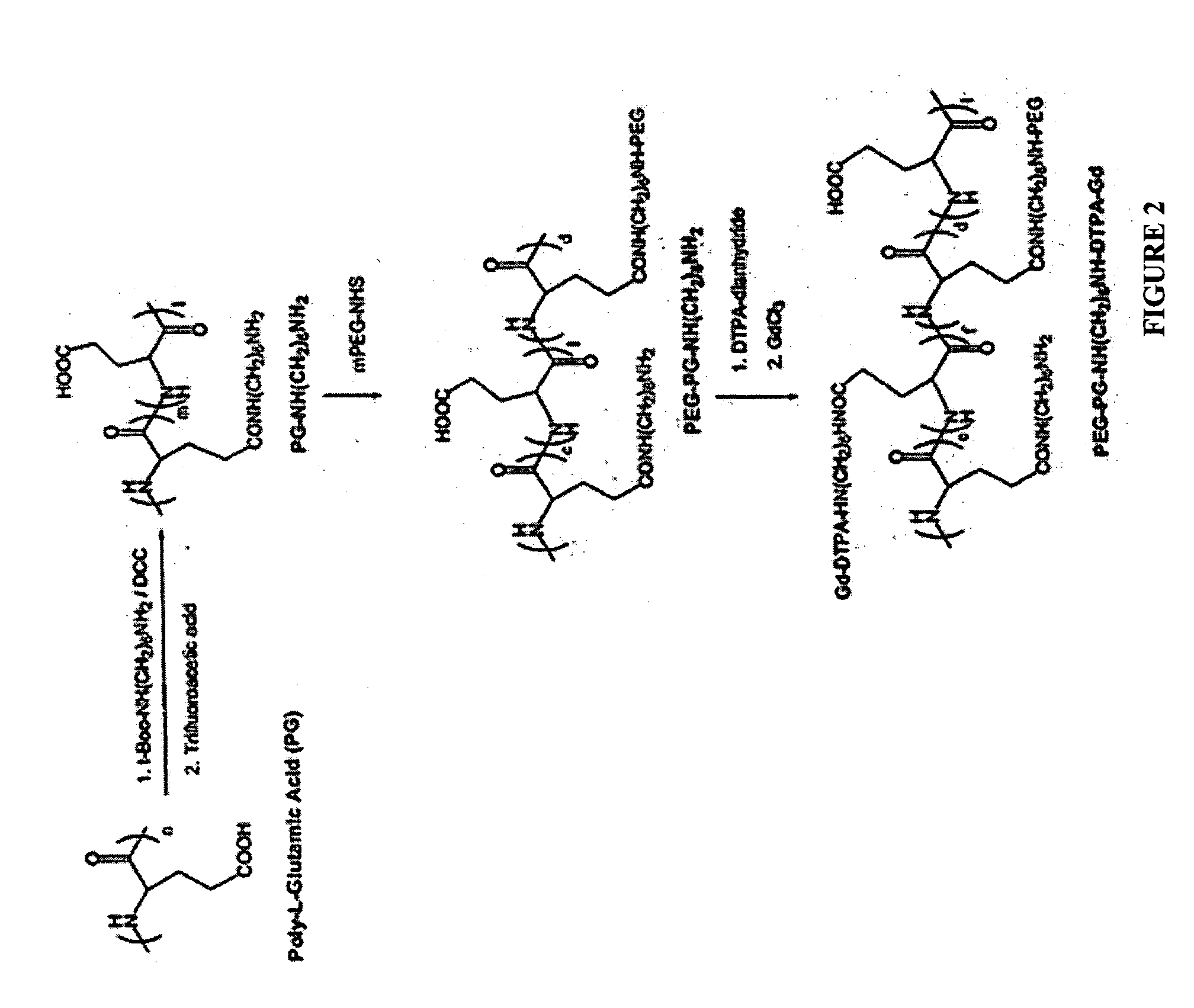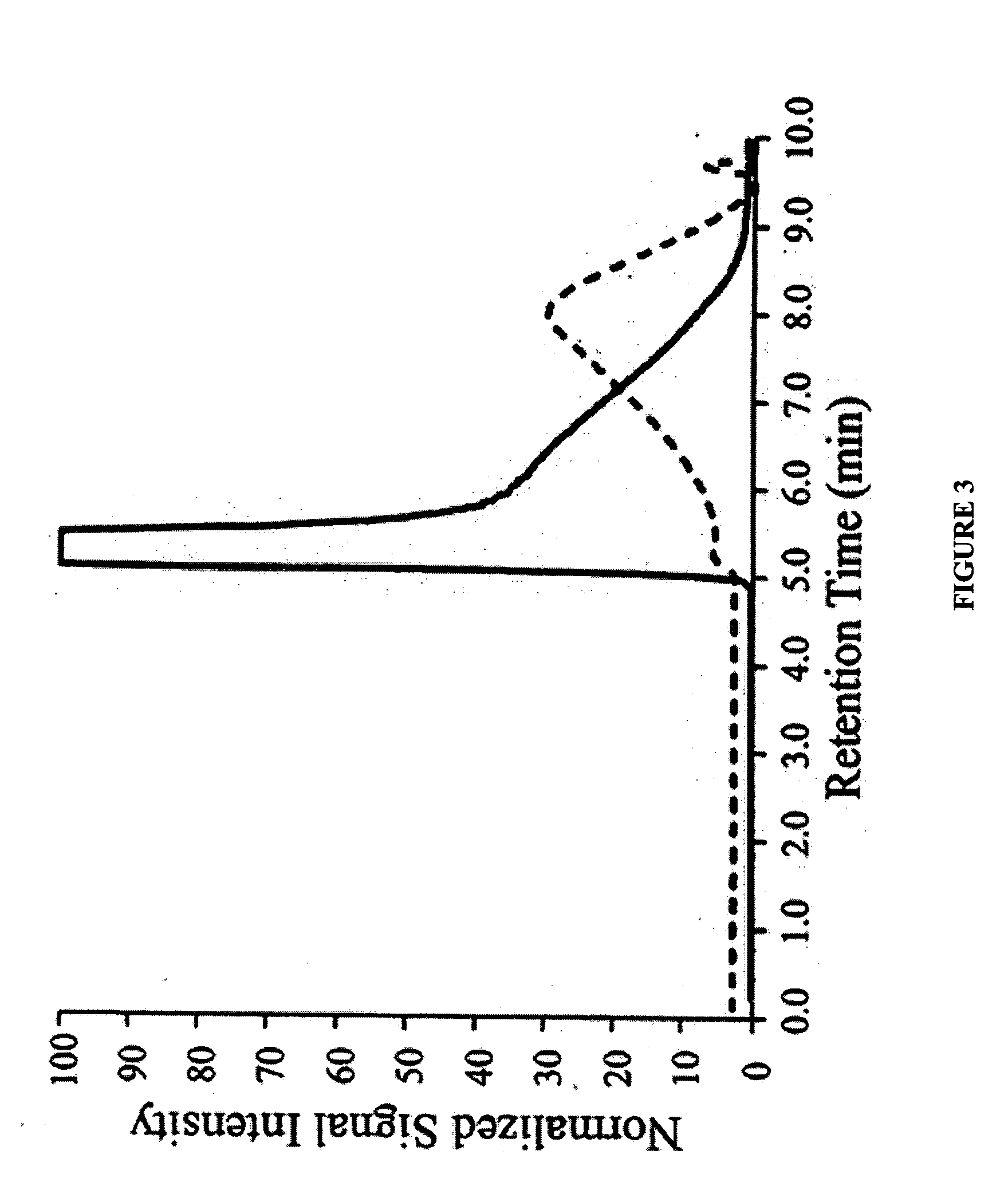Poly (L-glutamic acid) paramagnetic material complex and use as a biodegradable MRI contrast agent
a paramagnetic material and complex technology, applied in the field of polymer complexes, can solve the problems of inability to achieve the effect of contrast agents without the use of contrast agents, inability to use angiography, and increased risk of patients, and existing formulations of chelated gd are not suitable for use as contrast agents for blood pool imaging
- Summary
- Abstract
- Description
- Claims
- Application Information
AI Technical Summary
Benefits of technology
Problems solved by technology
Method used
Image
Examples
example 1
Materials and Analytical Methods
[0091] In these examples, materials were obtained from the following sources: PG sodium salt; N-tert-butoxycarbonyl-1,6-diaminohexane hydrochloride (t-Boc-Hex-NH2); 1,3-diisopropylcarbodiimide; pyridine; 4-dimethylaminopyridine; trifluoroacetic acid (TFA); diethylenetriaminepentaacedic acid (DTPA) dianhydride; gadolinium (III) chloride hexahydrate; 2,4,6-trinitrobenzenesulfonate (TBNS); 4-(2-pyridylazo)resorcinol (PAR); PBS (0.01 M phosphate buffered saline containing 138 mM NaCl and 2.7 mM KCl, pH 7.4) Cathepsin B and all other reagents not otherwise indicated in this example and solvents were purchased from Sigma Aldrich (St. Louis, Mo.).
[0092] Succinimidyl ester of methoxy poly(ethylene glycol)propionic acid (mPEG-NHS) was purchased from Shearwater (Huntsville, Ala.).
[0093]111InCl3 was obtained from Perkin-Elmer Life Sciences (Boston, Mass.).
[0094] p-Isothiocyanatobenzyl-diethylenetriaminepentaacetic acid (p-SCN-Bz-DTPA′3HCl) and p-aminobenzyl-...
example 2
Synthesis of 6-aminohexyl Poly(L-glutamine)
[0100] As part of a method of the present invention, PG functionalized with one or more 6-aminohexyl groups was prepared. The resulting molecule was of the general formula PG[-NH(CH2)6NH2]n, where n is greater than or equal to one. As shown in FIG. 1, the 6-aminohexyl group is attached to a side chain of a glutamic acid residue via the carboxyl group.
[0101] To prepare the 6-aminohexyl functionalized PG first an aqueous solution of sodium salt of PG with a number average molecular weight (Mn) of 17,000 and a degree of polymerization of 116 was converted to its acid form by acidifying with 1 N HCl to pH 3-4. The polymer precipitate was collected by centrifugation, washed with deionized water and lyophilized. 1.3 g of the lyophilized polymer was next added to 20 ml of anhydrous dimethylformamide to prepare a 10 mmol [COOH] solution. To this solution was added 2.0 g (8 mmol) of t-Boc-Hex-HN2 hydrochloride, 1.0 g (8 mmol) 1,3-diisopropylcarbod...
example 3
Synthesis of PG-Hex-DTPA-Gd
[0102] Also as shown in FIG. 1, the DTPA of PG-Hex-DTPA-Gd is conjugated to the 6-aminohexyl group of the PG side chains. To prepare a PG-Hex-DTPA-Gd complex, an approximately 1.1 mmol [NH2] solution of 6-aminohexyl PG prepared as described above was prepared by dissolving 500 mg of the compound in 15 ml of 0.1 M NaHCO3. To this solution, 1.43 g of DTPA-dianhydride (4 mmol) was added in portions over a period of 30 minutes. The pH of the reaction solution was adjusted to 8 by adding aliquots of 0.1 N NaOH solution over the 30 min period. After stirring at room temperature for two hours, the reaction mixture was dialyzed against PBS and deionized water at MWCO 10,000. The resulting solution was concentrated to 5 ml on a centrifugal filter at MWCO 10,000 and stored at 4° C. for future use. The amount of DTPA attached to the PG was determined by quantifying unreacted amino groups with a TNBS assay. Approximately 60% of the amino groups available at the start...
PUM
| Property | Measurement | Unit |
|---|---|---|
| flow rate | aaaaa | aaaaa |
| diameter | aaaaa | aaaaa |
| diameter | aaaaa | aaaaa |
Abstract
Description
Claims
Application Information
 Login to View More
Login to View More - R&D
- Intellectual Property
- Life Sciences
- Materials
- Tech Scout
- Unparalleled Data Quality
- Higher Quality Content
- 60% Fewer Hallucinations
Browse by: Latest US Patents, China's latest patents, Technical Efficacy Thesaurus, Application Domain, Technology Topic, Popular Technical Reports.
© 2025 PatSnap. All rights reserved.Legal|Privacy policy|Modern Slavery Act Transparency Statement|Sitemap|About US| Contact US: help@patsnap.com



